- Учителю
- Тема: “A recipe. The adjectives before nouns”.
Тема: “A recipe. The adjectives before nouns”.
Поурочный план
Предмет: Английский язык
Класс: 5 «А»
Дата: 31.01.2016
Учитель: Подлесная Ольга Николаевна
</<font color="#000000">Тема: "A recipe. The adjectives before nouns".
Цель урока: активизация речемыслительной деятельности учащихся по теме "A recipe"; объяснение новой темы "The adjectives before nouns" и её закрепление при выполнении практических заданий .
Задачи урока:
Практическая
-
активизировать и систематизировать лексический материал по теме: "Food and Cooking";
-
развивать коммуникативные умения учащихся;
-
развивать умения понимать аутентичные тексты, тексты кулинарных рецептов.
Развивающая
-
развивать интеллектуальный и эмоциональный потенциал обучающихся, развивать языковые и познавательные способности, готовность к коммуникации, обучать абстрактному мышлению;
-
расширить эрудицию учащихся, их лингвистический и общий кругозор.
Воспитательная
-
формировать познавательную активность, потребность использования языка в различных сферах деятельности (кулинарии).
Оборудование: мультимедиа-проектор, презентация Power Point, компьютер.
Раздаточный материал: карточки с заданиями.
Ход урока.
-
Организационный момент. Приветствие.
Good morning, pupils! It's a lovely day! I'm very glad to see you!
Let's start our lesson!
-
Фонетическая разминка.
"An apple a day keeps the doctor away. "
Дословный перевод: Съедая одно яблоко в день, вы
оставите вашего доктора без работы. Кто съедает одно яблоко в день
экономит на враче…
Русский аналог: Живот на живот - и всё заживёт. Лук от
семи недуг. Лук семь недугов лечит, а чеснок семь недугов изводит.
-
Речевая разминка.
Hands up! Hands down!
Hands on hips! Sit down!
Hands up! To the sides!
Bend left! Bend right!
One,two, three …Hop!
One, two, three ….Stop!
-
Основная часть урока. Объяснение нового материала.
Adjective Before Noun
We often use more than one adjective before the noun:
-
I like big black dogs.
-
She was wearing a beautiful long red dress.
What is the correct order for two or more adjectives?
1. First of all, the general order is:
opinion, fact
"Opinion" is what you think about something. "Fact" is what is definitely true about something.
-
a lovely new dress (not a new lovely dress)
-
a boring French film (not a French boring film)
2. The "normal" order for fact adjectives is
size, shape, age, colour / origin / material / purpose
-
a small 18th-century French coffee table
-
a rectangular black wooden box
3. Determiners usually come first, even though they are fact adjectives:
-
articles (a, the)
-
possessives (my, your...)
-
demonstratives (this, that...)
-
quantifiers (some, any, few, many...)
-
numbers (one, two, three)
Note that when we want to use two colour adjectives, we join them with "and":
-
Many newspapers are black and white.
-
She was wearing a long, blue and yellow dress.
-
Some adjectives give a specific opinion. We only use these adjectives to describe particular kinds of noun:
-
Food: tasty; delicious
Furniture, buildings: comfortable; uncomfortable
People, animals: clever; intelligent; friendly -
We usually put a general opinion in front of a specific opinion:
-
Nice tasty soup.
A nasty uncomfortable armchair
A lovely intelligent animal -
Usually we put an adjective that gives an opinion in front of an adjective that is descriptive:
-
a nice red dress; a silly old man; those horrible yellow curtains
-
We often have two adjectives in front of a noun:
-
a handsome young man; a big black car; that horrible big dog
-
Sometimes we have three adjectives, but this is unusual:
-
a nice handsome young man;
a big black American car;
that horrible big fierce dog -
It is very unusual to have more than three adjectives.
-
Adjectives usually come in this order:1
2
3
4
5
6
7
8
General
opinionSpecific
opinionSize
Shape
Age
Colour
Nationality
Material
-
We use some adjectives only after a link verb:afraid
alive
alone
asleep
content
glad
ill
ready
sorry
sure
unable
well
-
Some of the commonest -ed adjectives are normally used only after a link verb:
-
annoyed; finished; bored; pleased; thrilled
-
We say:
-
Our teacher was ill.
My uncle was very glad when he heard the news.
The policeman seemed to be very annoyed -
but we do not say:
-
We had an ill teacher.
When he heard the news he was a very glad uncle
He seemed to be a very annoyed policeman -
A few adjectives are used only in front of a noun:north
south
east
westnorthern
southern
eastern
westerncountless
occasional
loneeventful
indoor
outdoor -
We say:
-
He lives in the eastern district.
There were countless problems with the new machinery. -
but we do not say:
-
The district he lives in is eastern
The problems with the new machinery were countless.
-
Закрепление пройденной темы. Практические задания.
Task 1.

Task 2.

Task 3.

Task 4.
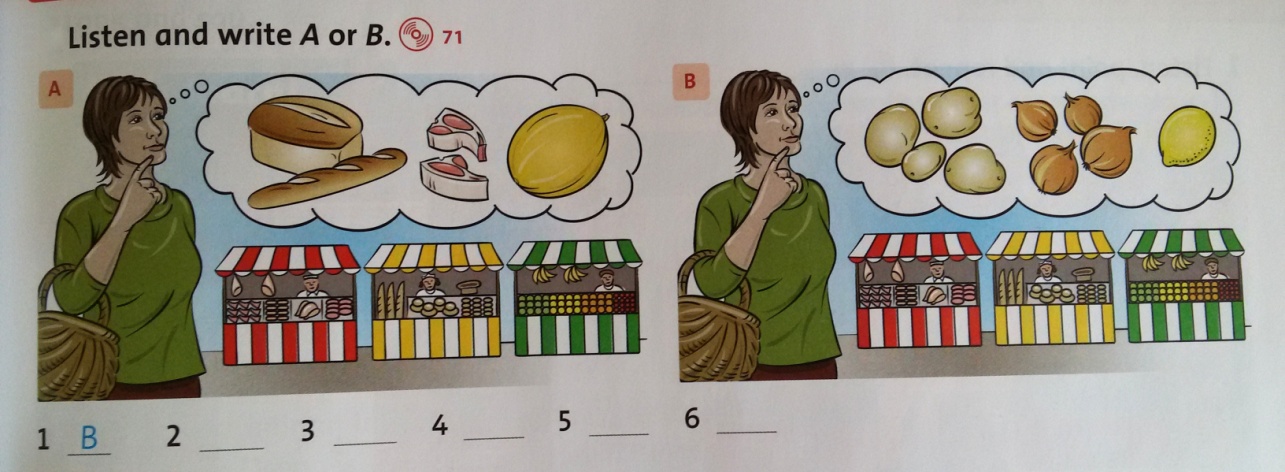
Task 5.
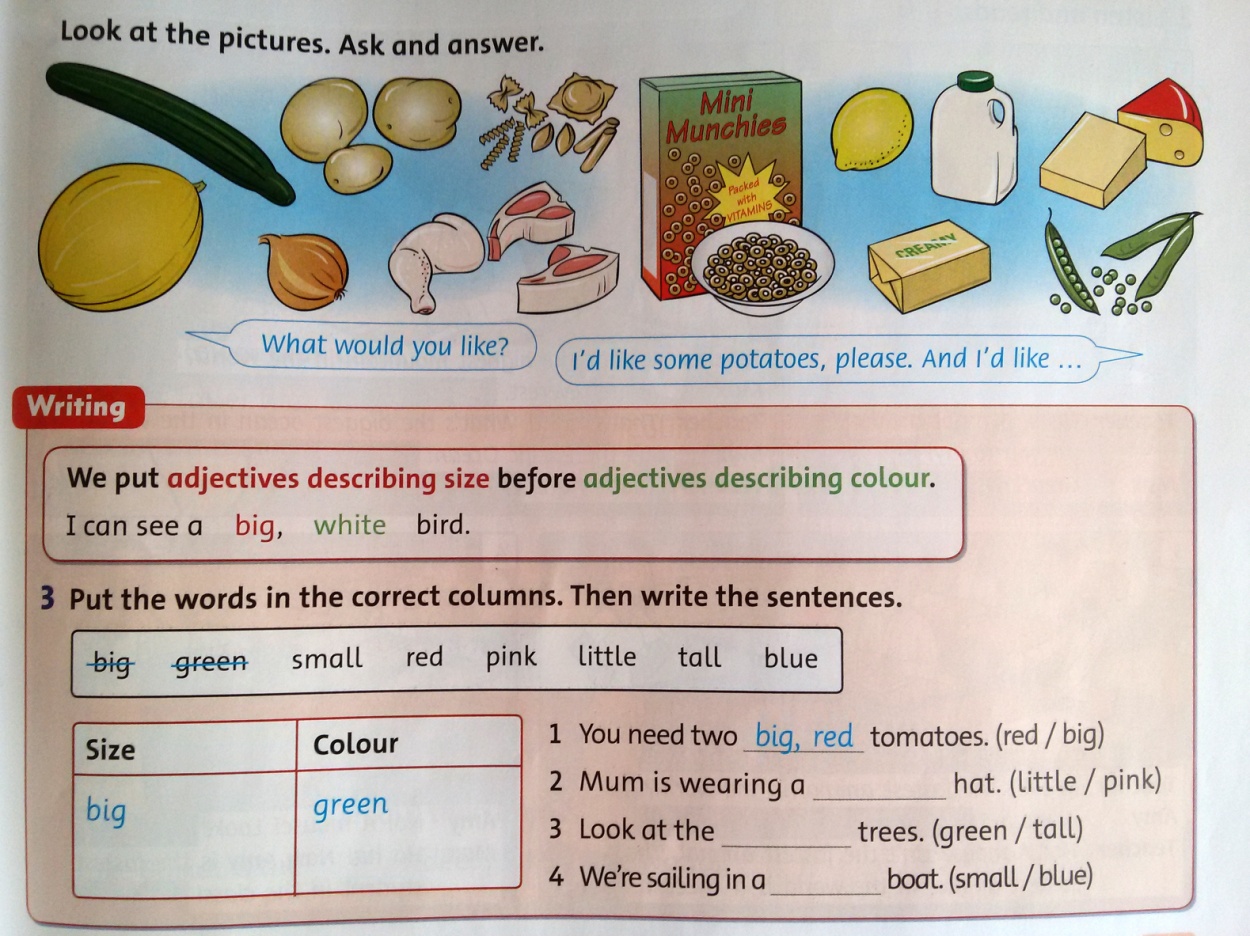
Task 6. Фронтальное задание.
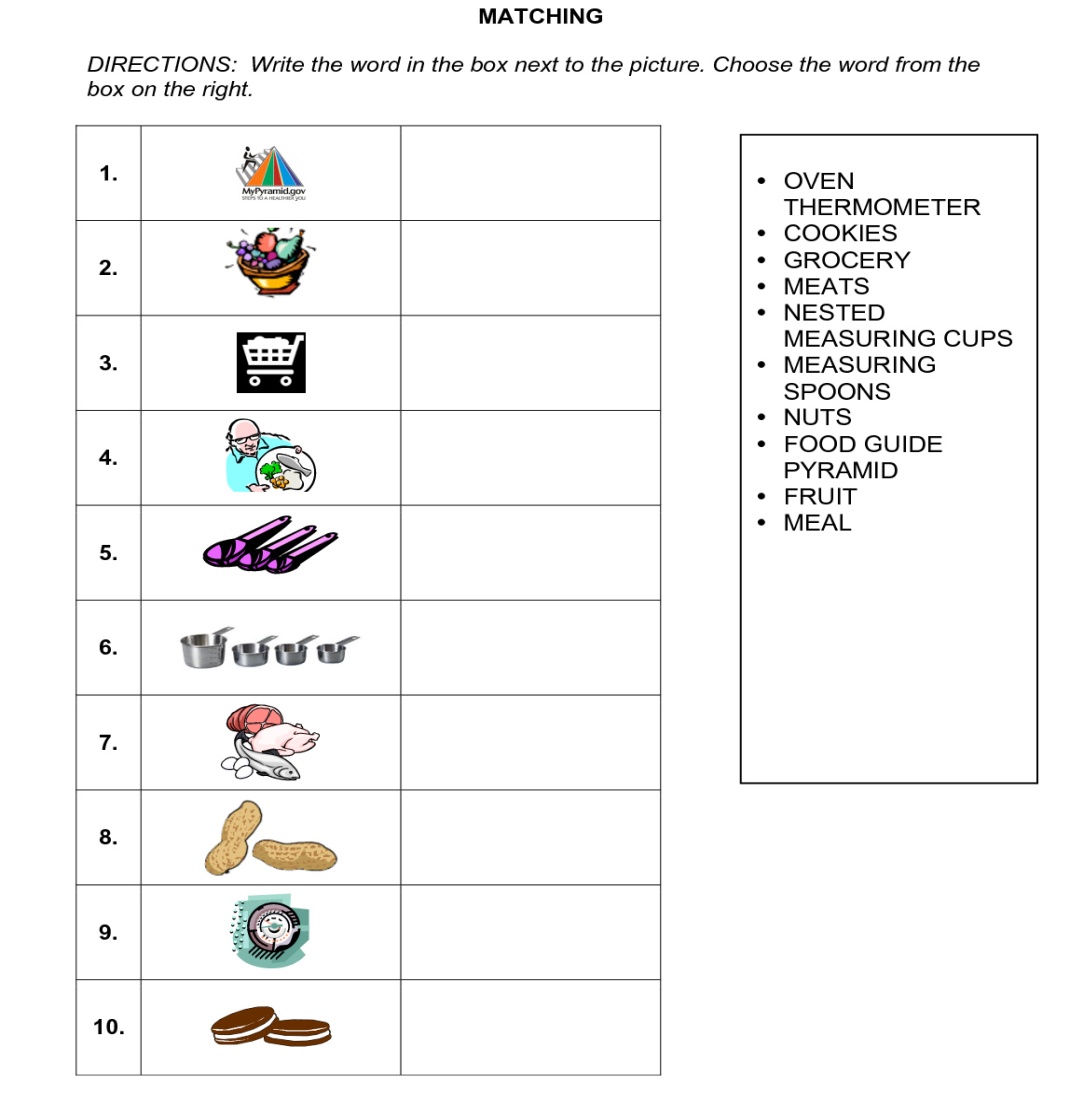
Task 7. Place the adjectives before the noun in the most
natural order.
Examples: a box (round, small) - a small round box; a beach
(long, sandy) - a long sandy beach
1. clouds (big, grey)
2. a writer (German, well-known)
3. a table (glass, large, rectangular)
4. a mug (coffee, dirty)
5. weather (horrible, wet)
6. a tie (blue, silk)
7. a suitcase (brown, huge, leather)
8. a chalet (cosy, Swiss)
Answers:
1. big grey clouds
2. a well-known German writer
3. a large rectangular glass table
4. a dirty coffee mug
5. horrible wet weather
6. a blue silk tie
7. a huge brown leather suitcase
8. a cosy Swiss chalet
Task 8.
1. a hat (pink, ridiculous, straw)
2. a tv series (new, superb)
3. a village (Alpine, little, pretty)
4. a doctor (Australian, good-looking, young)
5. a dessert (chocolate, delicious)
6. a film (delightful, Spanish)
7. a flat (London, spacious)
8. a statue (marble, small, white)
Answers:
-
a ridiculous pink straw hat
2. a superb new tv series
3. a pretty little Alpine village
4. a good-looking young Australian doctor
5. a delicious chocolate dessert
6. a delightful Spanish film
7. a spacious London flat
8. a small white marble statue
Task 9. Write the correct word in the boxes below the picture.
1. 2.
2.  3.
3.

4. 5.
5.  6.
6.
Answers:
1 - fry
2 - boil
3 - cut
4 - grill
5 - cook
6 - wash up
Task 10. Read the text.
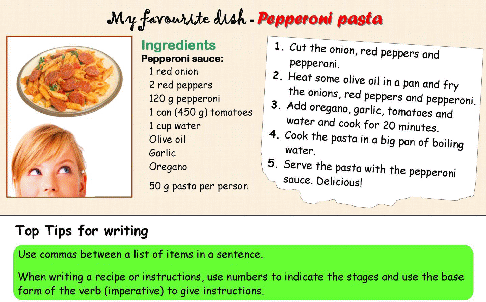
Task 11.Circle True or False for these sentences.
1.
You need two red onions to make pepperoni pasta.
True
False
2.
You need about 450 g of tomatoes to make the sauce.
True
False
3.
450 g of pasta is enough for only one person.
True
False
4.
You should cut the onions, peppers and pepperoni before you fry them.
True
False
5.
You should add the oregano and garlic before you fry the ingredients.
True
False
6.
You need to fry the pasta in a big pan.
True
False
Answers:1. False
2. True
3. False
4. True
5. False
6. False
Task 12.Circle the correct verb form to complete these sentences.
1.
Cut / Cutting / Cuts the carrots and onions into small pieces, then added / adding / add them to the salad.
2.
Cook / Cooked / Cooking the meat for about 12 minutes.
3.
Boil / Boiled / Boiling the water for 5 minutes, then add / adding / added the pasta.
4.
Don't forget to washed up / washing up / wash up after you have finished eating.
Answers:1. Cut, add
2. Cook
3. Boil, add
4. wash up
VI. Homework.
a)Workbook - p. 58, Ex. 1.
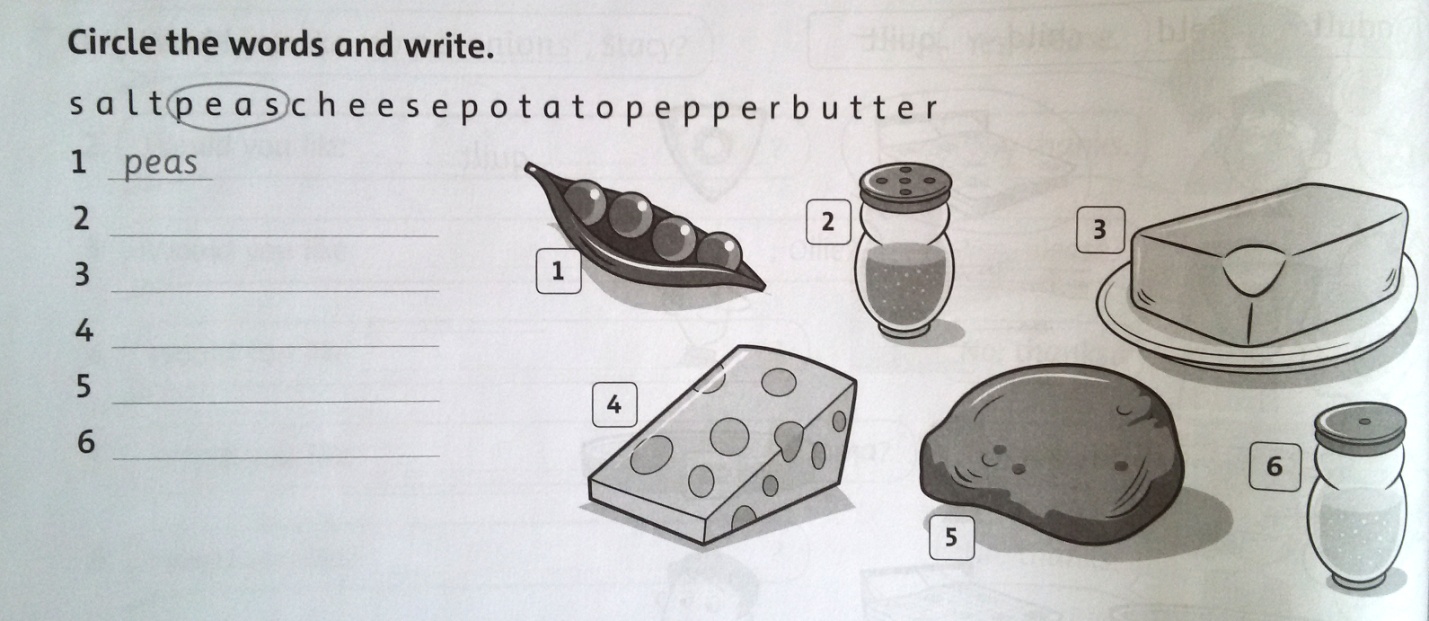
b) Write the recipe for your favourite dish.
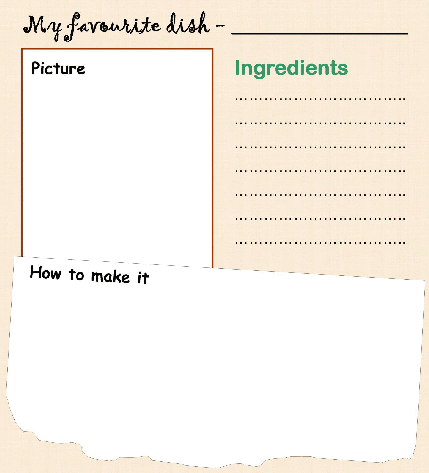
-
Marks for the lesson.
-
Reflection.